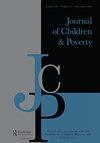The poverty industry: the exploitation of America’s most vulnerable citizens
Q2 Social Sciences
引用次数: 13
Abstract
regarding Milwaukee renters. Desmond describes how economic and psychological vulnerability, material hardship, and community disorganization are all interlocking aspects of housing instability, whose cumulative effects are tremendous. The seemingly perpetual stress of finding housing, which can be especially protracted for people with eviction records, can lead to hopelessness, lethargy, and depression. The people Desmond follows struggle to procure and keep employment even as their housing costs eat up as much as 80 to 90% of their monthly income. They fall further behind on debts they are already unable to pay, and often government aid and access to social services are severed. Children are especially vulnerable, as they bounce from school to school, falling ever further behind. Eviction is more than just a loss of a home; it is a loss of neighbors, friends, and vital social support networks. People forced to move in and out of homes are denied opportunities to invest in the collective good of a community. The people in Desmond’s research are in constant motion; they move in quickly and leave equally quickly. They inherit what was left behind by previous tenants even as they themselves often leave possessions when they are forcefully removed from their homes. Sometimes what they leave is refuse and physical dilapidation; equally often, it is furniture and children’s toys. These people are like fugitives from homelessness, moving from place to place, leaving a trail of personal possessions and hardship, dislocated from one squalid domicile after another. A unique aspect of this research is Desmond’s candid and uncensored access to landlords. Acting as gatekeepers to the low-income housing market, landlords have considerable power over the fates of the urban poor and their communities. As Desmond explains, eviction is one of many strategies employed by landlords to shape the ‘geography of advantage and disadvantage that characterized the modern American city’ (89). Through screening processes, evictions, and control over rents, landlords effectively funnel low-income renters into isolated communities where struggling schools, high crime, urban blight, and other elements of structural disadvantage are the norm. Desmond makes a compelling argument for a universal housing voucher program as a solution to the exploitation that is endemic to private housing markets available to the urban poor. He suggests that such a program, through which renters would pay 30% of their income for housing, would virtually eliminate evictions in this country. Families would have more income available for food and other necessities as well as for investments in education and job training. The combination of rigorous research and important policy recommendations makes this work valuable to a wide audience; it is a must-read.贫困产业:对美国最弱势公民的剥削
密尔沃基的租房者Desmond描述了经济和心理脆弱性、物质困难和社区解体是住房不稳定的环环相扣的方面,其累积效应是巨大的。寻找住房的压力似乎是永恒的,对于那些有驱逐记录的人来说,这种压力可能会持续很长时间,导致绝望、嗜睡和抑郁。德斯蒙德追踪的人们努力寻找并保持工作,即使他们的住房成本消耗了他们月收入的80%到90%。他们在已经无力偿还的债务上进一步落后,政府援助和获得社会服务的机会往往被切断。儿童尤其容易受到伤害,因为他们从一所学校跳到另一所学校,越来越落后。驱逐不仅仅是失去家园;这是邻居、朋友和重要的社会支持网络的损失。被迫迁入和迁出家园的人们被剥夺了投资于社区集体利益的机会。德斯蒙德的研究对象是不断运动的;它们来得快,走得也快。他们继承了以前房客留下的东西,即使他们自己在被迫离开家园时经常留下财产。有时他们留下的是垃圾和残破的物理;同样常见的是家具和儿童玩具。这些人就像无家可归的逃亡者,从一个地方搬到另一个地方,留下了个人财产和苦难的痕迹,从一个又一个肮脏的住所流离失所。这项研究的一个独特之处在于德斯蒙德对房东的坦诚和不加审查的接触。作为低收入住房市场的看门人,房东对城市贫民及其社区的命运有着相当大的影响力。正如Desmond所解释的那样,驱逐是房东用来塑造“现代美国城市特征的优势和劣势地理”的众多策略之一(89)。通过筛选程序、驱逐和控制租金,房东有效地将低收入租房者引入孤立的社区,在那里,学校办学困难、犯罪率高、城市衰败和其他结构性劣势因素是常态。德斯蒙德提出了一个令人信服的论点,认为普遍的住房代金券计划是解决城市穷人可获得的私人住房市场特有的剥削问题的办法。他认为,通过这样一个计划,租房者将支付其收入的30%来购买住房,实际上可以消除这个国家的驱逐现象。家庭将有更多的收入用于购买食品和其他必需品,以及投资于教育和职业培训。严谨的研究和重要的政策建议相结合,使这项工作对广泛的受众有价值;这是一本必读的书。
本文章由计算机程序翻译,如有差异,请以英文原文为准。
求助全文
约1分钟内获得全文
求助全文

 求助内容:
求助内容: 应助结果提醒方式:
应助结果提醒方式:


